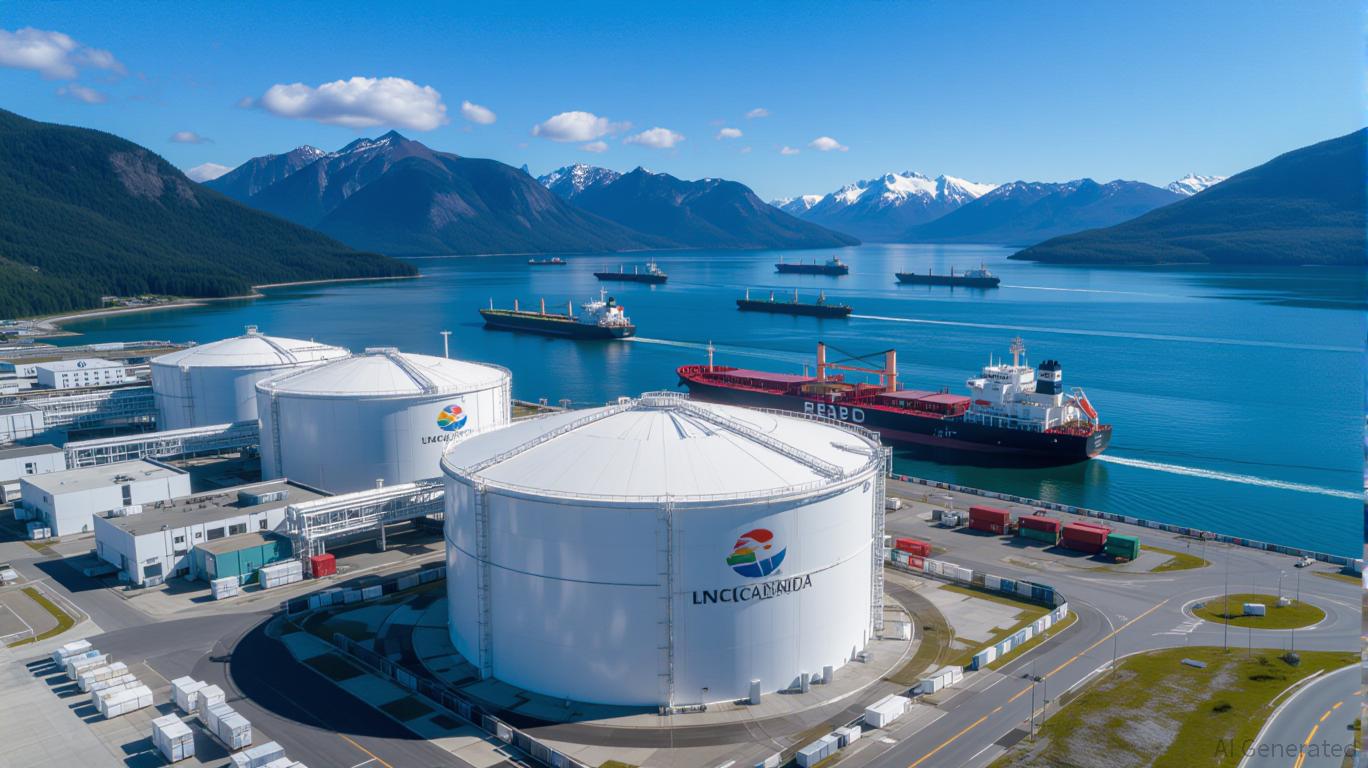
The Western Canadian natural gas market is at a crossroads. For much of 2025, the region has grappled with a stubborn oversupply, weak pricing, and the slow ramp-up of LNG Canada’s export operations. While the start of commercial production at Canada’s first major liquefied natural gas (LNG) export terminal in late 2025 was hailed as a turning point, the reality has been more nuanced. Storage levels remain elevated, producers are exercising capital discipline, and the path to a balanced market is proving longer and more uncertain than initially anticipated. For investors, the key question is whether the current challenges are temporary hiccups or structural headwinds that will delay the market’s rebalancing—and what this means for the timing and magnitude of price recovery in 2026.
The Oversupply Conundrum: A Market Stuck in Neutral
Western Canadian natural gas production hit record levels in 2025, averaging 19.24 billion cubic feet per day (Bcf/d) in the first quarter. This output, driven by prolific tight gas plays in the Montney and Duvernay formations, has outpaced domestic demand and export capacity. As of August 2025, storage inventories in Alberta remain at 635 billion cubic feet (Bcf), a level 30% above the five-year average. This surplus has kept AECO prices depressed, with the benchmark hovering around $1.10 per million British thermal units (MMBtu)—a fraction of the Henry Hub price in the U.S.
The persistence of oversupply is not merely a function of high production. Weak demand from the LNG Canada facility has exacerbated the imbalance. Despite the terminal’s June 2025 start-up, its first train has operated below design capacity due to technical issues, consuming only 400 MMcf/d instead of the expected 1 billion MMcf/d. The second train, slated for full production by 2026, remains a future promise. Meanwhile, domestic demand has been muted by mild summer weather and delayed industrial projects.
The LNG Ramp-Up: A Marathon, Not a Sprint
LNG Canada’s commercial operations were expected to be the catalyst for a price rebound. However, the facility’s slow ramp-up has delayed the anticipated surge in feedgas demand. Analysts now project that the terminal will require at least 12–18 months to reach full capacity, with Train 1 achieving 100% output by late 2025 and Train 2 following in 2026. This timeline means that the market will remain oversupplied for the foreseeable future, with storage levels unlikely to normalize before mid-2026.
The delay has forced producers to adopt a wait-and-see approach. Companies like Tourmaline Oil Corp. and ARC Resources Ltd. have curtailed production or deferred drilling to avoid compounding the oversupply. For example, ARC Resources curtailed 360 MMcf/d of natural gas at its Sunrise asset in Q2 2025, while Tourmaline deferred hydraulic fracturing due to weak prices. These actions reflect a sector prioritizing capital discipline over short-term output growth.
Producer Capital Discipline: A Double-Edged Sword
The industry’s response to weak pricing has been a mix of pragmatism and caution. Producers are leveraging infrastructure ownership and takeaway capacity to access higher-value U.S. markets, mitigating the impact of low AECO prices. For instance, ARC Resources realized a $3.19/MMcf price in Q2 2025—$1.12/MMcf above the AECO 7A index—by utilizing its U.S. export infrastructure. This strategy highlights the importance of market diversification in capturing value.
However, capital discipline also carries risks. The 200 drilled but uncompleted wells in the Montney region, double the typical number, signal a reluctance to invest in new production. While this may help balance the market in the short term, it could limit supply-side flexibility if global demand for LNG surges in 2026. The challenge for producers is to strike a balance between preserving cash flow and maintaining the ability to respond to future demand shocks.
Investment Implications: Navigating the Rebalancing Timeline
For investors, the key takeaway is that the Western Canadian gas market is in a transitional phase. Near-term risks include prolonged weak pricing, storage overflows, and operational delays at LNG Canada. These factors could weigh on earnings for E&P companies and infrastructure providers in 2025–2026. However, the long-term outlook is more promising. Once LNG Canada reaches full capacity, feedgas demand could add 2–3 Bcf/d to the market, significantly narrowing the AECO-Henry Hub differential and improving pricing.
The timing of this rebalancing is critical. If LNG Canada’s ramp-up accelerates, as recent maintenance progress suggests, the market could see a price inflection in late 2026. Conversely, further delays or production outages could prolong the oversupply. Investors should monitor key indicators:
1. Storage drawdown rates (a faster depletion would signal stronger demand).
2. LNG Canada’s operational progress (Train 1’s full output by late 2025 is a key milestone).
3. Producer capital allocation (a shift toward growth could signal confidence in the rebalancing timeline).
Conclusion: A Market in Transition
The Western Canadian natural gas market is navigating a complex rebalancing act. While the LNG Canada start-up has introduced a new demand driver, the slow ramp-up and persistent oversupply have delayed the price recovery. For investors, the path forward requires patience and a nuanced understanding of the interplay between supply discipline, export capacity, and global demand dynamics. Those who position themselves to benefit from the eventual normalization—whether through infrastructure plays, LNG-focused producers, or companies with strong U.S. market access—stand to capitalize on a market poised for long-term value creation.
In the short term, caution is warranted. But for the long-term investor, the Western Canadian gas sector offers a compelling case study in resilience and adaptation. As the market inches toward equilibrium, the rewards for those who stay the course could be substantial.
